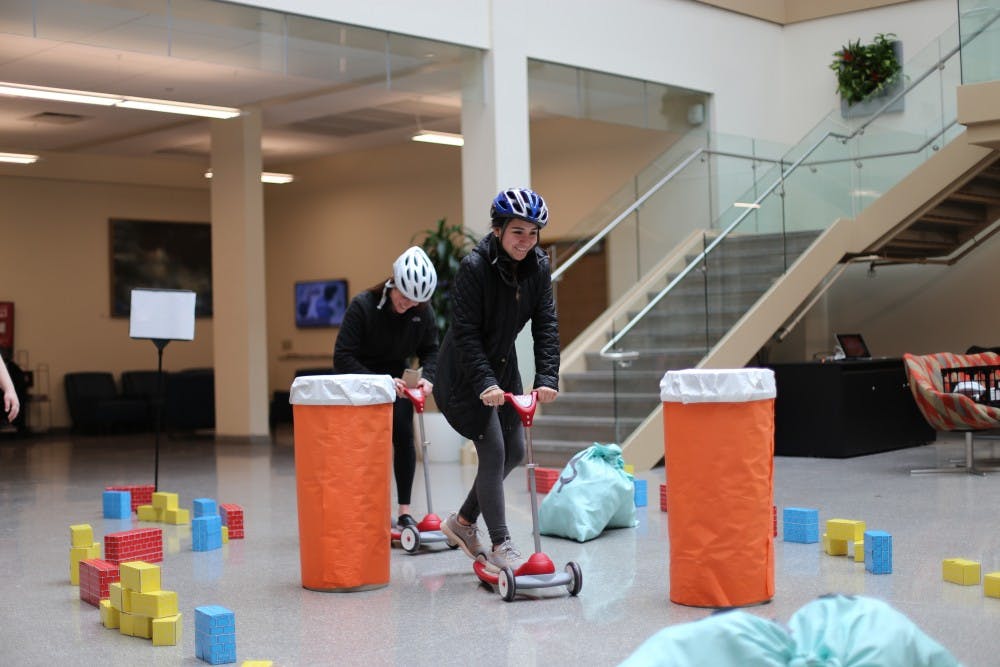No breaking news played on the large television screens in the Franklin Hall commons Tuesday afternoon.
In the atrium of chairs full of studying students, a scooter obstacle course covered the floor.
The obstacle course was part of a student-run public relations campaign for With Purpose, a childhood-cancer nonprofit chosen as the client for a national public relations competition.
“We wanted to make you feel like you’re a kid,” senior Sarah Addison said.
The five students representing the IU Beth Wood Chapter of Public Relations Student Society of America have been working on the campaign since October, as part of MSCH-J460: Bateman Competition.
All teams participating in the national Bateman Case Study Competition were tasked with creating a public relations campaign to increase awareness of problems with childhood cancer treatments and promote the With Purpose brand. PRSSA will choose three finalists to present their campaigns in Charleston, South Carolina, in May.
The IU team entitled their campaign “Whyonlyfour,” alluding to the four treatments for childhood cancer approved by the Food and Drug Administration since 1980, and four percent of the National Cancer Institute’s budget spent on childhood cancer research.
“We felt like that was the most jarring statistic,” junior Aspen Schopp said.
The IU team used three different types of obstacles to represent the three major barriers to creating new cancer treatments.
Money bags, made of pillowcases stuffed with newspaper, symbolized funding deficiencies. School supplies scattered at the end of the course signified a lack of research motivation.
Trash cans covered in orange and white construction paper served as prescription bottles, demonstrating the scarcity of treatments available.
At age six, team member and IU senior Alexandra Davie was diagnosed with stage four Wilms tumor cancer, the most common kidney cancer in children. She said her survivor perspective has given the team an advantage.
“I’ve been in the shoes of the kids they advocate for,” Davie said.
After completing the obstacle course, participants looked through virtual reality glasses to experience the perspective of a child with cancer.
The team decided to produce virtual reality videos after IU junior Dustin Kenna, a Leukemia cancer survivor and Davie’s friend, told them people can’t understand what it’s like to be a child with cancer until a person experiences it.
Based on that concept, the team designed two videos to offer a glimpse into the life of a child with cancer. One video shows the perspective of a kid playing on a playground while Kenna narrates the challenges of childhood cancer.
The second video, shot on a 360 camera, places the viewer in a hospital room that displays facts about childhood cancer on the walls.
“It’s a more immersive experience,” said IU junior Melissa Dvojacki, who helped shoot the virtual reality videos.
Addison said talking to childhood cancer survivors and their families, combined with the virtual videos, humanized their campaign.
“It helps make the statistics feel real,” Addison said.




